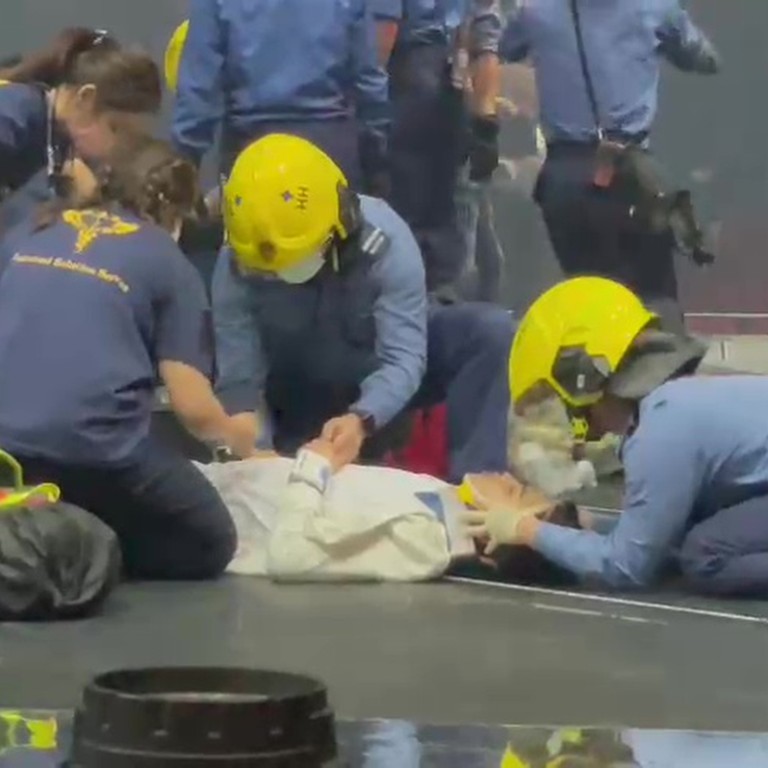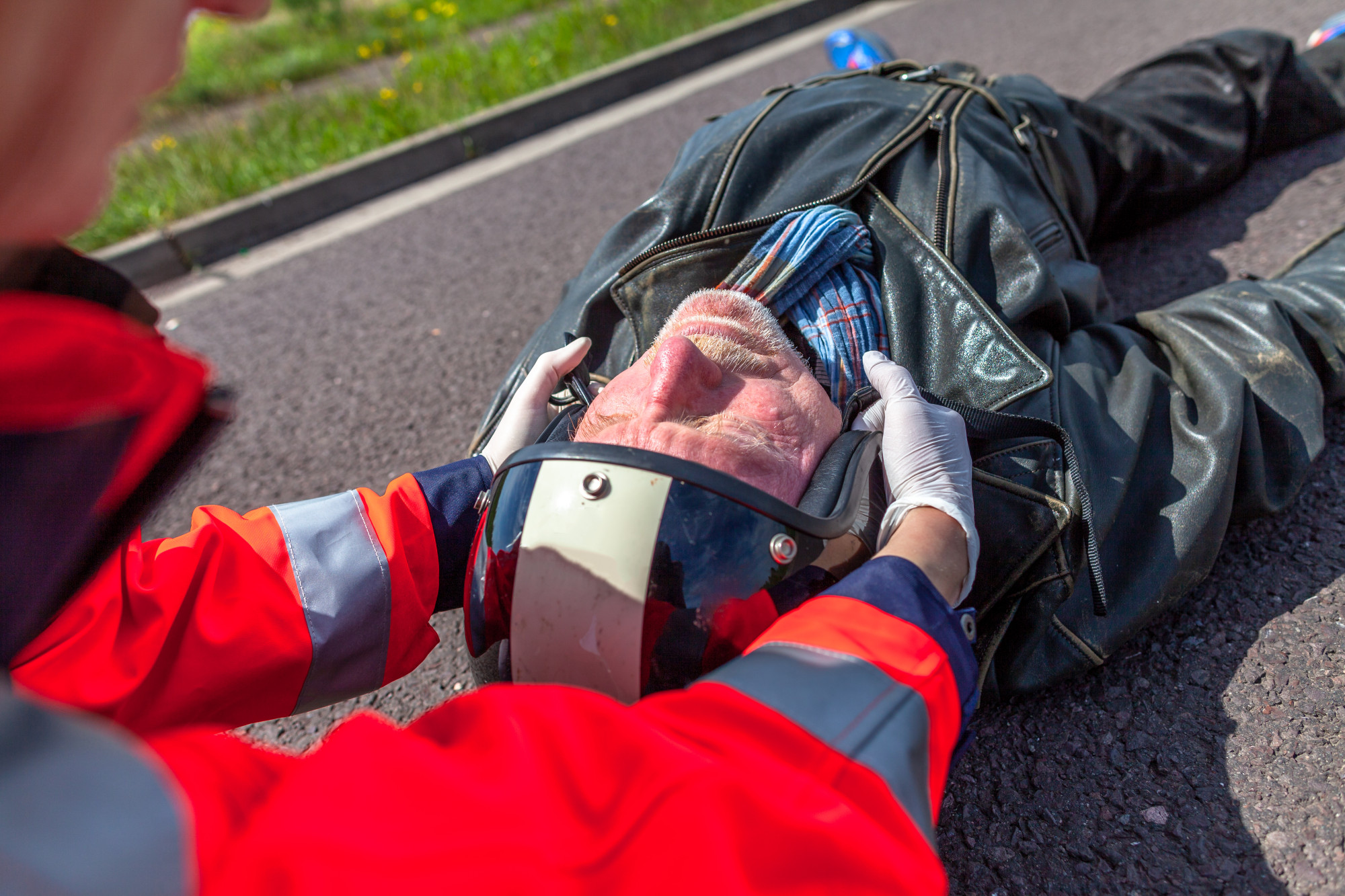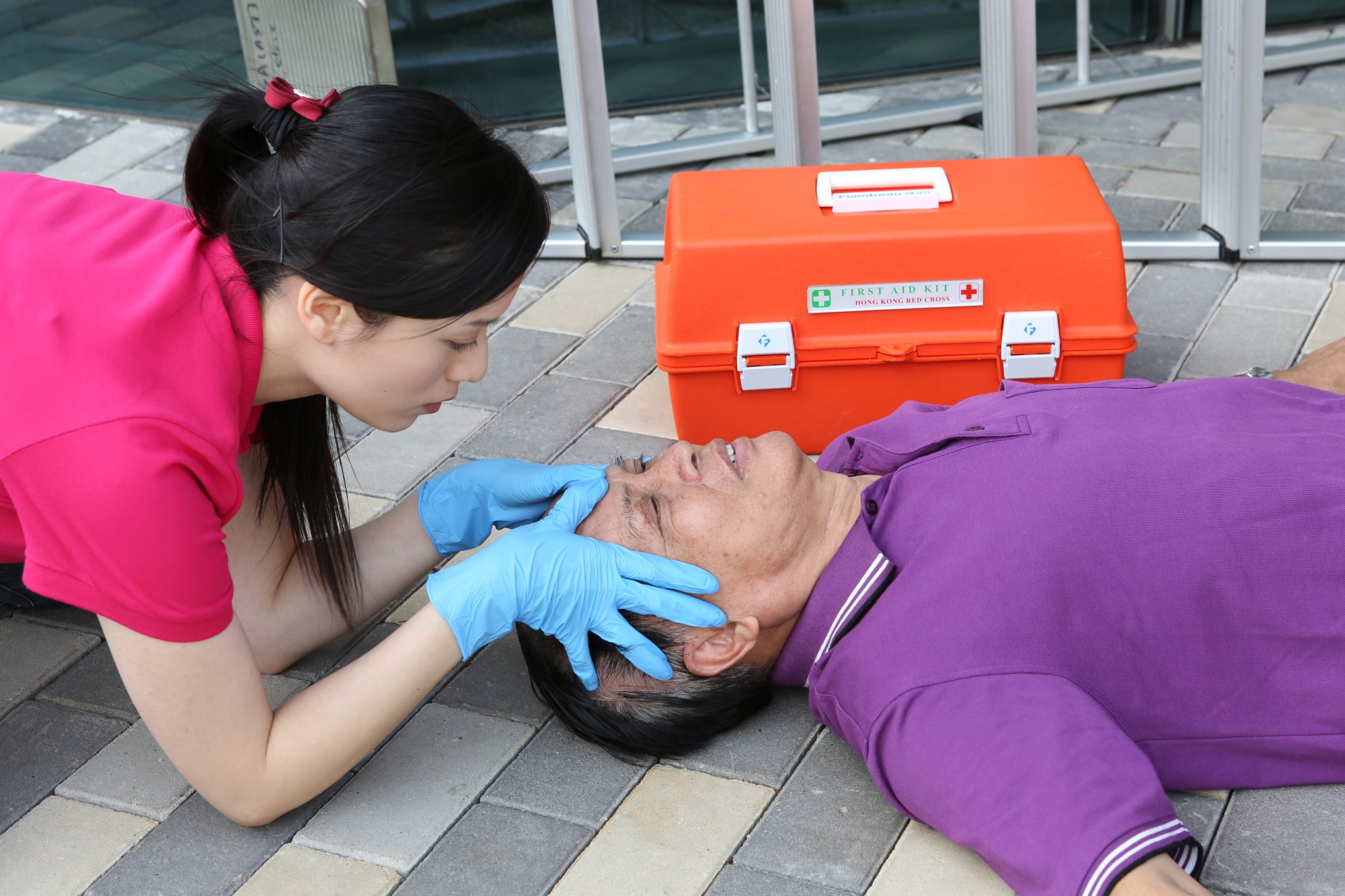
Spinal injuries: how to be a smart first responder at an accident scene to help without causing further harm
- Mirror concertgoers in Hong Kong watched the first aid response after a fallen screen injured at least two dancers; would you know what to do – and not to do?
- Keep victims calm and still, experts say, and prevent them moving their neck and head; only trained people should move a spinal injury victim
Thousands of Hong Kong concertgoers watched in horror last month as a giant video screen fell on stage during a performance by popular boy band Mirror, injuring at least two dancers.
Mo Li Kai-yin, 27, who took the brunt of the fall, suffered a brain haemorrhage and fracture of the fourth vertebrae in his neck, according to sources. He underwent two major operations at Queen Elizabeth Hospital in Yau Ma Tei. He could be left paralysed from the neck down.
It also drew attention to the actions of those first on the scene.

If a person has been in an accident and spinal damage is suspected, seeking help by calling 999 – the city’s emergency telephone number – is the first rule of first aid, says Chow Hung-tsan, a Hong Kong doctor specialising in orthopaedics and traumatology.
Never try to move the injured person, he says. “If the injured is conscious, calm them down and ask them to stay completely still until help arrives,” says Chow.
Could you give CPR to a heart attack victim? 5 steps to saving a life
Chow also says it is vital to avoid any head or neck movement. “Avoid moving the head or neck while applying any kind of first aid treatment.”
“Keep the person in a fixed position and use heavy towels or rolled sheets and place them on both sides of the neck or hold the head and neck to prevent movement.”

As well as calling the emergency number, Barbara Tai, manager of first aid training for the Hong Kong Red Cross, says a person on the scene should also ensure their own safety.
“If the environment is not safe, he or she should not enter the scene to approach the patient,” says Tai.
If it is a car accident, it is important to make sure the car’s engine is switched off and the emergency brake is engaged. She also stresses the importance of keeping the person still.
“If the casualty is conscious, ask him/her to stay still and not to move. Reassure the person that medical aid is on the way.”

If there is an accident involving a motorcyclist, and the person is wearing a helmet, do not remove it, Chow says. “However, if the helmet is blocking the airway, that prevents the injured person from breathing; then you have to remove it carefully,” he says.
Tai says medical professionals or a trained first aider may help support and stabilise the head of a spinal injury victim by placing soft pads close to both sides of the head or even support the head with both hands.
“This should be handled with extra care to avoid causing further damage to the neck and spine,” she says. “Leave the casualty in the position as he/she is found. Only trained paramedical personnel can move the spinal injury victim.”

Richard Cheng, the training manager for Hong Kong St John Ambulance, says the most serious risk associated with spinal injury is damage to the spinal cord.
“Such damage can cause loss of power and/or sensation below the injured area. The spinal cord or nerve roots can suffer temporary damage if they are pinched by displaced or dislocated discs, or by fragments of broken bone.
“If the cord is partly or completely severed, damage may be permanent.”
Quirky Fire Department mascot helps triple attendance at first aid courses
Cheng says any of the following incidents should alert you to a possible spinal injury in the person involved:
-
falling from a height, such as a ladder;
-
falling awkwardly, for instance, while doing spinal gymnastics or trampolining, or diving into a shallow pool and hitting the bottom;
-
falling from a horse or motorbike;
-
collapsing in a rugby scrum;
-
experiencing sudden deceleration in a motor vehicle;
-
having a heavy object fall across the back; or
-
suffering an injury to the head or face.

